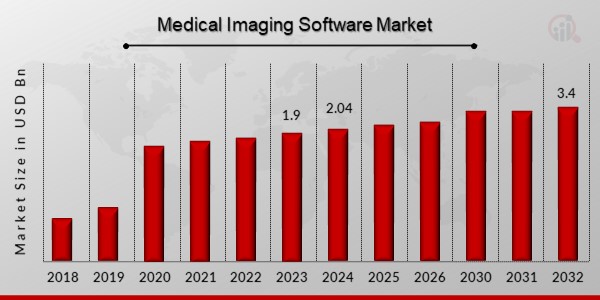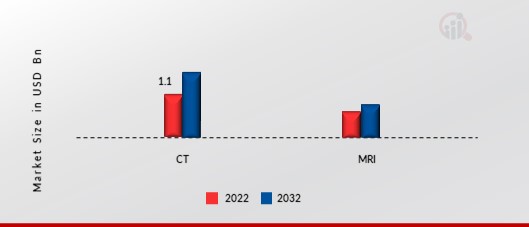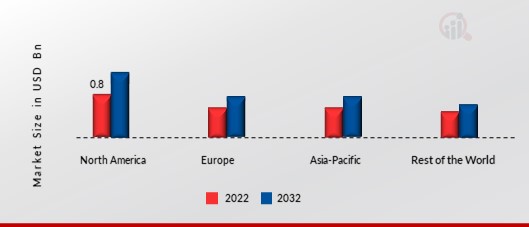Certified Global Research Member


Key Questions Answered
- Global Market Outlook
- In-depth analysis of global and regional trends
- Analyze and identify the major players in the market, their market share, key developments, etc.
- To understand the capability of the major players based on products offered, financials, and strategies.
- Identify disrupting products, companies, and trends.
- To identify opportunities in the market.
- Analyze the key challenges in the market.
- Analyze the regional penetration of players, products, and services in the market.
- Comparison of major players’ financial performance.
- Evaluate strategies adopted by major players.
- Recommendations
Why Choose Market Research Future?
- Vigorous research methodologies for specific market.
- Knowledge partners across the globe
- Large network of partner consultants.
- Ever-increasing/ Escalating data base with quarterly monitoring of various markets
- Trusted by fortune 500 companies/startups/ universities/organizations
- Large database of 5000+ markets reports.
- Effective and prompt pre- and post-sales support.
Global Medical Imaging Software Market Overview
The Medical Imaging Software Market Size was valued at USD 1.9 Billion in 2023 and is projected to grow from USD 2.04 Billion in 2024 to USD 3.4 Billion by 2032, exhibiting a compound annual growth rate (CAGR) of 6.56% during the forecast period (2024 - 2032). Improvements in medical technology and extremely productive are the key market drivers enhancing the market growth.

Source: Secondary Research, Primary Research, MRFR Database and Analyst Review
Medical Imaging Software Market Trends
- Rising need for non-invasive diagnostic techniques propels market growth
Market CAGR for medical imaging software rising need for non-invasive diagnostic techniques. The market of medical imaging software is expanding rapidly as non-invasive diagnostic procedures become more popular. Medical imaging software allows for non-invasive diagnosis of a wide range of medical disorders, which has raised demand for these technologies. Non-invasive diagnostic techniques are chosen over invasive treatments because they are less uncomfortable, have fewer consequences, and take less time to recover from. The rising frequency of chronic diseases such as cancer, cardiovascular disease, and neurological disorders has significantly boosted the medical imaging software market. Medical imaging software is used to identify, diagnose, and arrange treatment for certain disorders. Because the elderly are more prone to chronic diseases, the expanding aging population is also driving demand for medical imaging software. Furthermore, the growing adoption of digital imaging technologies is driving the medical imaging software industry. High-quality images are produced by digital imaging technology, allowing medical professionals to make accurate diagnosis. Adoption of digital imaging technology has also resulted in the creation of more sophisticated medical imaging software, which has aided market growth.
In addition, the medical imaging software market is expanding rapidly as a result of technical improvements in the industry. The advancement of improved imaging technology has resulted in the development of more sophisticated software, which has resulted in greater demand for medical imaging software. The development of artificial intelligence (AI) and machine learning (ML) in the field of medical imaging has also helped to market expansion. AI and ML have enabled medical imaging software to execute previously unachievable tasks. For example, AI algorithms can examine medical images to find anomalies that human radiologists may overlook. This has resulted in enhanced accuracy in diagnosis and treatment planning, which has resulted in better patient outcomes.
Cloud-based imaging solutions are another technological advancement fueling the market growth of the medical imaging software. Medical workers can access medical pictures from anywhere, at any time, thanks to cloud-based technologies. This has resulted in increased collaboration among medical personnel, resulting in better patient care.
Finally, technological advancements are propelling the medical imaging software industry forward. The advancement of advanced imaging technologies, as well as the advent of AI and ML, have resulted in the development of more sophisticated software, which has raised demand for medical imaging software. Cloud-based imaging technologies have also aided market expansion by allowing medical professionals to access medical pictures from any location, at any time.
Medical Imaging Software Market Segment Insights
Medical Imaging Software Type Insights
The Medical Imaging Software Market segmentation, based on software type includes Integrated & Stand-Alone. In 2022, integrated category controlled the market. This large proportion can be due to the advantages of using these solutions. The integrated toolset is intended to improve workflow in a variety of radiology applications. Philips' Xcelera Cardiology Information Management, for example, is integrated image management software that allows for single-point access to advanced clinical applications while also improving clinical efficiency.
Medical Imaging Software Imaging Type Insights
The Market segments of Medical Imaging Software, based on imaging type, includes 2D, 3D, 4D. In 2022, the 4D category held the biggest market share of more than 45.0%. This category is likely to continue its dominance during the forecast period as a result of technological improvements in 4D imaging technology, which enables efficient and accurate real-time viewing of the human body, hence minimizing distortion in operations. 4D imaging is a three-dimensional image analysis that includes real-time movement. Because of the rising acceptance of these technologies, the markets for 3D and 4D imaging software solutions are expected to rise at a rapid pace throughout the projected period.
Medical Imaging Software Modality Insights
The Medical Imaging Software Market segmentation, based on imaging type, includes CT, MRI. In 2022, the CT segment was responsible for 30.0% of revenue, as a result of its low cost. Dual-source and AI-enabled CT scanners are projected to be significant commercial milestones. The release of improved devices is expected to drive demand for CT imaging software in the future years.
Figure1: Medical Imaging Software Market, by Imaging Type, 2022 & 2032 (USD Billion)

Source: Secondary Research, Primary Research, MRFR Database and Analyst Review
Medical Imaging Software Application Insights
The Market segmentation of Medical Imaging Software, based on application, includes neurology and cardiology. Over the projection period, the cardiology segment is expected to grow at a considerable CAGR. Over the forecast period, the cardiology sub-segment is likely to exhibit the most significant market growth. Rising improvements in cardiac imaging technologies are expected to result in an expanding share of the cardiology segment market. This is related to an increase in the number of cardiac imaging tests as the frequency of heart disorders rises. As a result, market expansion is anticipated.
Medical Imaging Software Regional Insights
By region, the study provides the market insights into North America, Europe, Asia-Pacific and Rest of the World. North America will dominate the market in 2022, This expansion can be linked to the presence of well-established healthcare facilities equipped with advanced diagnostic equipment, as well as favourable government initiatives to encourage the adoption of healthcare IT in this region.
Further, the major countries studiedin the market reportare The US, Canada, German, France, the UK, Italy, Spain, China, Japan, India, Australia, South Korea, and Brazil.
Figure2: Medical Imaging Software Market Share By Region 2022 (USD Billion)

Source: Secondary Research, Primary Research, MRFR Database and Analyst Review
Europe Medical Imaging Software Market accounts for the second-largest market share due to the region's abundance of well-known providers of medical imaging software. Further, the German market of Medical Imaging Software held the largest market share, and the UK market of Medical Imaging Software was the fastest growing market in the European region
The Asia-Pacific Medical Imaging Software Market is expected to grow at the fastest CAGR from 2024 to 2032. This is because of the enormous and quickly expanding population, which is fueling demand for cutting-edge medical imaging software solutions. Moreover, China’s market of Medical Imaging Software held the largest market share, and the Indian market of Medical Imaging Software was the fastest growing market in the Asia-Pacific region.
Medical Imaging Software Key Market Players& Competitive Insights
Leading market players are investing heavily in research and development in order to expand their product lines, which will help the market of Medical Imaging Software, grow even more. Market participants are also undertaking a variety of strategic activities to expand their footprint, with important market developments including new product launches, contractual agreements, mergers and acquisitions, higher investments, and collaboration with other organizations. To expand and survive in a more competitive and rising market climate, Medical Imaging Softwareindustry must offer cost-effective items.
Manufacturing locally to minimize operational costs is one of the key business tactics used by manufacturers in the Medical Imaging Software industry to benefit clients and increase the market sector. In recent years, the Medical Imaging Software industry has offered some of the most significant advantages to medicine. Major players in the Medical Imaging Software Market, including Merge Healthcare Incorporated, ScienceSoft USA Corporation, Acuo Technologies, Fujifilm Holding Company, IBM Corporation and others, are attempting to increase market demand by investing in research and development operations.
Siemens Healthineers is a German manufacturer of medical devices. Its headquarters are in Erlangen, Germany, and it is the parent company of various medical technology companies. Werner von Siemens co-founded a tiny family business in Berlin in 1847, which gave rise to the corporation. Siemens owns 75% of Siemens Healthineers. Siemens Medical Solutions was born in 2001, and the name was later changed to Siemens Healthcare. In 2021, Siemens Healthineers included augmented reality technology into its medical imaging software. AR technology allows medical personnel to more intuitively see and interact with medical images, potentially improving patient outcomes.
Merative, formerly IBM Watson Health, became a separate company in 2022. Merative provides products and services that leverage artificial intelligence, data analytics, cloud computing, and other modern information technologies to assist clients in facilitating medical research, clinical research, real-world evidence, and healthcare services. Francisco Partners, an American private equity firm based in San Francisco, California, owns Merative. Thomson Healthcare was a branch of Thomson Corporation until 2008, when it merged with Reuters to become Thomson Reuters' healthcare unit. In 2020, IBM Watson Health has introduced the Imaging AI Marketplace, a cloud-based platform that allows healthcare providers to access and employ AI-powered medical imaging software. The platform gives healthcare providers access to a variety of AI-powered medical imaging technologies that can assist improve patient outcomes while also lowering expenses.
Key Companies in the market of Medical Imaging Software include
- GE Healthcare
- Siemens Healthineers
- Agfa-Gevaert N.V.
- Hologic Inc.
- Pie Medical Imaging
- AQUILAB
- MIM Software Inc.
- Merge Healthcare Incorporated
- ScienceSoft USA Corporation
- Acuo Technologies
- Fujifilm Holding Company
- IBM Corporation
Medical Imaging SoftwareIndustry Developments
In July 2020: Varian Medical Systems, a preeminent supplier of cancer care solutions, was purchased by Siemens Healthineers. Siemens Healthineers was able to broaden its selection of cancer treatment and medical imaging software thanks to the acquisition.
In April 2021: The addition of AI to GE Healthcare's medical imaging software was disclosed. Radiologists can identify and prioritize crucial cases with the use of AI-powered software, which can lead to better patient outcomes.
In November 2019: The cloud-based medical imaging software platform IntelliSpace Enterprise Edition by Philips was introduced. The technology enables healthcare providers to view patient data and medical imaging from any location at any time, which can enhance communication between medical specialists and the quality of patient treatment.
Medical Imaging Software Market Segmentation
Medical Imaging Software Market By Software Type Outlook
- Integrated
- Stand-Alone
Medical Imaging Software Market By Imaging Type Outlook
- 2D
- 3D
- 4D
Medical Imaging Software Market By Modality Outlook
- CT
- MRI
Medical Imaging Software Market By Application Outlook
- Neurology
- Cardiology
Medical Imaging Software Regional Outlook
- North America
- US
- Canada
- Europe
- Germany
- France
- UK
- Italy
- Spain
- Rest of Europe
- Asia-Pacific
- China
- Japan
- India
- Australia
- South Korea
- Australia
- Rest of Asia-Pacific
- Rest of the World
- Middle East
- Africa
- Latin America
Leading companies partner with us for data-driven Insights
Kindly complete the form below to receive a free sample of this Report
Tailored for You
- Dedicated Research on any specifics segment or region.
- Focused Research on specific players in the market.
- Custom Report based only on your requirements.
- Flexibility to add or subtract any chapter in the study.
- Historic data from 2014 and forecasts outlook till 2040.
- Flexibility of providing data/insights in formats (PDF, PPT, Excel).
- Provide cross segmentation in applicable scenario/markets.





















